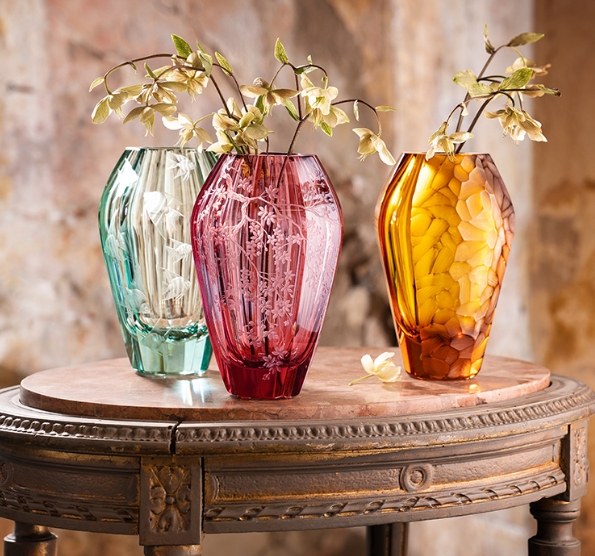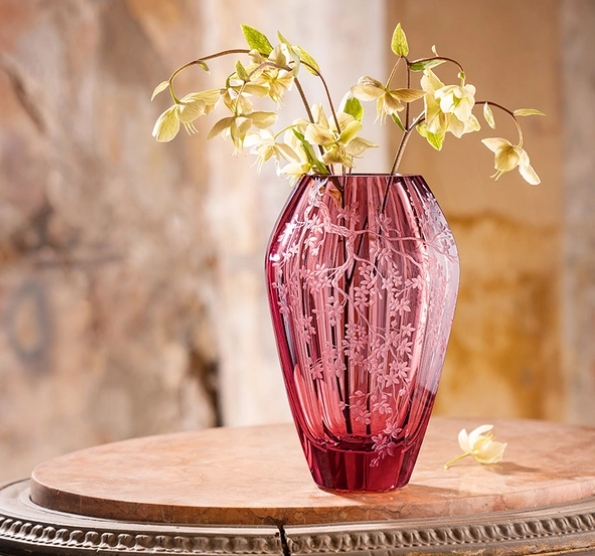Breadcrumbs navigation
- Home page
- About Moser
- Blog
- Symbol of both dynasty and artistic quality. In terms of history, how was the initials’ meaning altering?

Symbol of both dynasty and artistic quality. In terms of history, how was the initials’ meaning altering?
Originally, it was being coined – into coins used in cities of ancient Greece. As a graphic expression of one’s origin, authorship or ownership, the initials hide a rather rich and fascinating piece of history within. They are not losing on their enchantment – not even nowadays.
Initials as a symbol of strength, power and faith
One of the very first initials came from the year 350 before Christ. It remained in the form of a symbol, composed of two Greek letters alpha and chí. Those letters were coined into a clay coin, which was being used in a northern part of the Peloponnese peninsula, known as Achaia. Such initials served as the then currency. In terms of the Roman Empire, the initials served to validate coins’ authenticity.
The initials’ origins may be traced back somewhere else, too – in the form of Christogram letters, for example. Those comprise a huge part of Christian symbolism. One of the most famous happens to be the symbol XP, which is composed of two Greek letters chí and ró – as those mean the first two letters of the name Christ in Greek.
An ancient Roman writer, named Lactantius, had once recorded a story of this Christogram letter’s meaning. He got inspired by a dream of Constantine the Great. On the night before the battle of Milvian Bridge, Constantine dreamed of seeing the XP symbol above in the sky, together with a writing; In hoc signo vinces, meaning You win with such a symbol. On the morning of the following day, Constantine ordered all his soldiers to paint the symbol on their shields. And eventually, they succeeded in winning the battle.

In the Middle Ages, the initials served as the emperors’ signature. The majority of them didn’t know how to write back then. Therefore, they used to write only a short line into pre-prepared symbols. Charles the Great, known as King of the Franks, used to put a small hook in the shape of the letter v into his symbol. Charles was the one who spread such a tradition – that initials would mean the symbol of both authority and power over the subjugated territory.
Since then, various dynasties or armies had commenced using their initials to express their status. Kings and queens used initials to label their property, flags or coats of arms. In some countries, the initials are employed even nowadays – Belgium, Monaco or Thailand, for example.

Proof of ownership
Initials were used to label not only the property of kings and queens, but also that of people of noble birth. Since the 16th century, the initials have been occurring on the noblemen’s furniture, crockery, glasses or weapons.
The spectacular Victorian Age in Britain and The United States had brought a much more significant meaning to the phenomenon of initials. Stylish and design initials used to adorn everything – from parasols to carriages. High-posted women used initials to recognize which scarf was whose, for example. This fashion eventually became a tradition. In public laundry rooms, initials were embroidered with either white or red thread. Later on, there emerged an option of silver and golden thread, which made a perfect fit for the higher class of society.

Initials within the art
The artists use initials to sign their work, too. Since medieval times, some of them have been providing their paintings, statues or pieces of furniture with initials. One of such examples happens to be the famous initials AD – employed by a German painter and graphic Albrecht Dürer. Among other things, Dürer was celebrated for his self-portraits, aquarelles and prints – which turned out almost flawless, in terms of both artistic and technological perspective. Similarly to Leonardo da Vinci, Dürer’s paintings were inspired by living models. Moreover, he enriched his paintings with self-written pieces of text.
Another such artist was a Dutch Baroque painter Rembrand Harmenszoon van Rijn. Furthermore, he employed different types of initials, depending on the period of his creations. In the beginning, he signed his works with the simple letter R. Later on, Rembrand added some letters and began signing as RH or RHL.
In simple terms, initials always bear a meaning within. Legacy of the author, who created such a fascinating piece. Legacy of the person, who employs initials to express his own perception of beauty. Legacy of the value and meaning, which both endure over the time.

Leave your initials within the crystal
The glass may bear the meaning inscribed within two or more letters. Through the configurator MyMoser, you may voice your honour to all those exceptional people in your life. You may create a piece of real value.
What’s the signature’s meaning, in terms of art?
The phenomenon of signing artworks had become common during the 19th century. Before, plenty of significant works remained without any signature. Why is it that we sign artworks? Apart from the question of authorship, the artist’s signature bears one more meaning – it means a declaration that the work is fully finished, approved and prepared for the public display. Such is a rather fragile and peculiar moment for any author.
Source: Zimmerman Art Gallery









